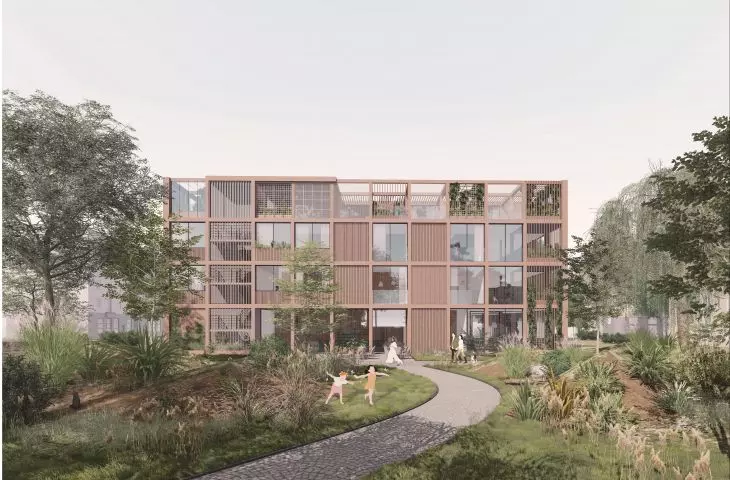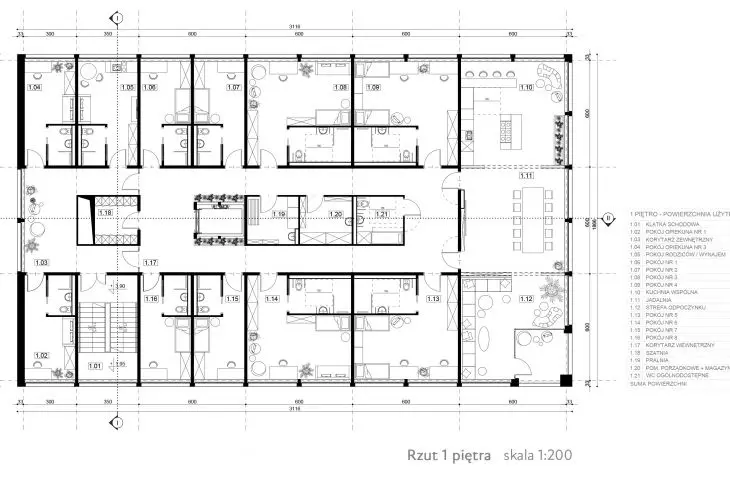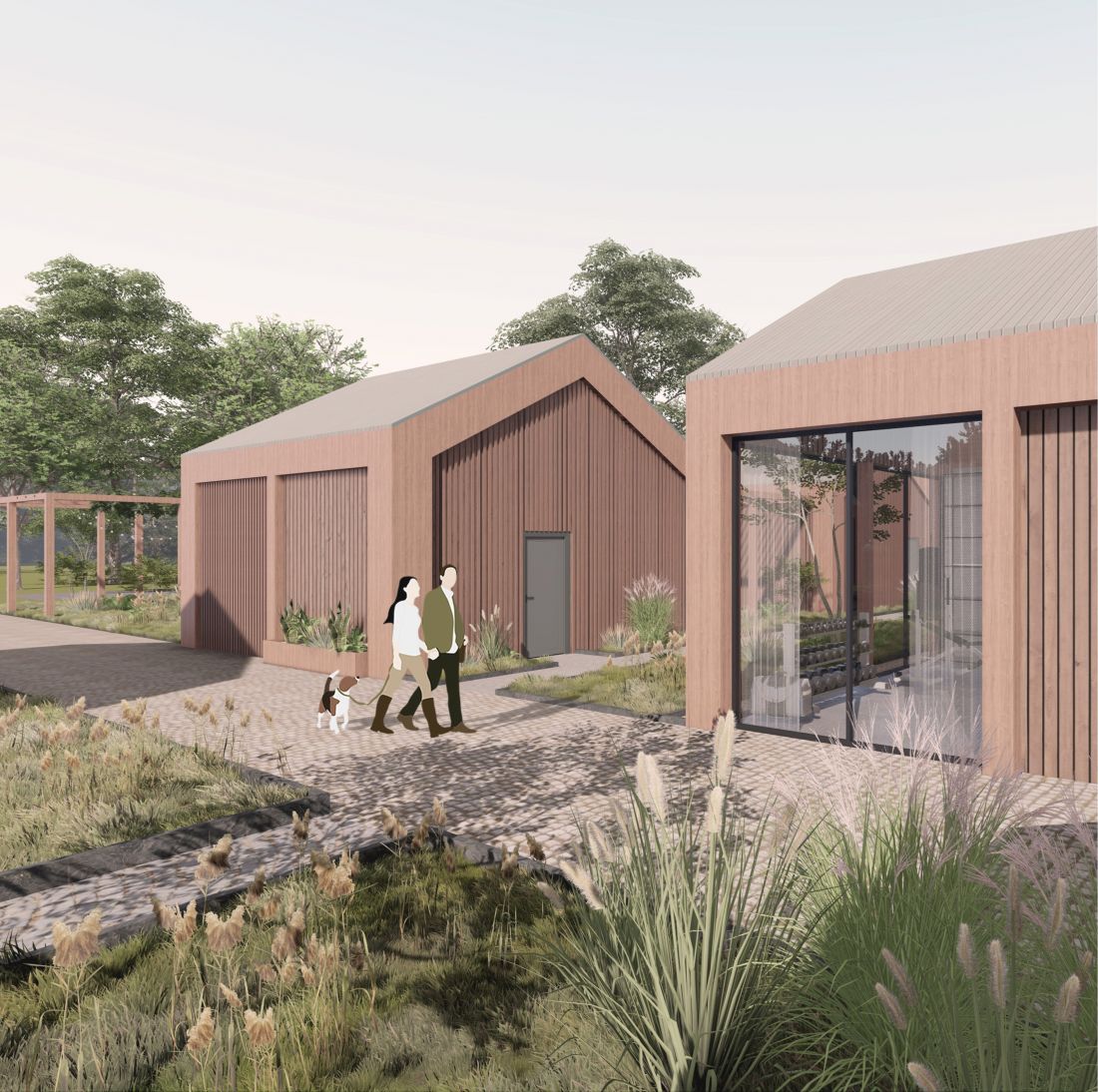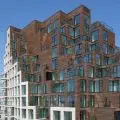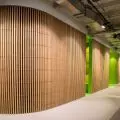{tag:studenci}, a graduate of the Faculty of Architecture at Gdańsk University of Technology, decided to address the shortage of centers for people with Down syndrome and intellectual disabilities in Poland. Her work, done under the supervision of Dr. Małgorzata Skrzypek-Łachińska, is a proposal for a modular solution creating four variants of the centers' buildings. The project received the Award of the Mayor of the City of Gdańsk for the best master's degree, and was in the finals of this year's edition of the prof. Zbyszek Zawistowski"Diploma of the Year" competition, the results of which will be announced on October 6.
Magdalena Czopka divided her diploma thesis into two compatible elements—a research analysis of spatial needs for people with Down syndrome and intellectual disabilities, on the basis of which she created the second element—a concept of a model, universal way to design a center using modular architecture.
sample center locations
© Magdalena Czopka
Due to the large deficit of centers for people with Down syndrome in Poland and the lack of clearly formulated design guidelines, I wanted to create a modular system that could facilitate the establishment of such facilities in the future. Often the initiators of construction are parents or associations, money is scarce, and there are far more willing residents than available places. I hope that my project will, at least to some extent, address this issue and make this difficult task easier. In-depth research work allowed me to distinguish four options for the development of the centers. Such a design premise aims to systematize and normalize the most relevant aspects of such facilities," explains the architect.
The author proposed four types of centers
© Magdalena Czopka
The developed assumptions differ in location, form of development and group of users with special needs and functions located in a given center. The author was keen not to create enclaves closed to society, but places that foster integration and tame the concept of intellectual disability.
The green roof of the point building and the main entrance to the first floor building
© Magdalena Czopka
What fate awaits sick people after the death of their caregivers? Who will provide them with an adequate livelihood? It's not about the bare minimum of existence, but care at a sufficiently high level, taking care of multifaceted development. Few disabilities are as fraught with myths as Down syndrome. Meanwhile, it is a genetic defect that causes disorders in the body that require, like other conditions, appropriate developmental support, the author stresses.
module construction
© Magdalena Czopka
modular system like building blocks
To expand her knowledge, Magdalena Czopka decided to conduct a diagnostic survey. The basis for the design guidelines of the model center were the interviews she conducted: with existing institutions supporting people with intellectual disabilities, with a psychologist (who consulted on the progress of the work) and with a parent of a child with Down syndrome.
The solution to many of the problems that I was able to isolate after the interviews was to create a system for designing such centers that allows minimizing the monetary and time outlay of their implementation, resulting in an increase in the number of facilities, the architect explains.
types of functional modules
© Magdalena Czopka
The proposed modular system, like building blocks, combines individual functions into a whole. Each module, measuring 6 by 6 meters, is made of CLT and GLULAM wood. The functional modules are divided into four types: general development (providing functions such as care and support, integration with the outside environment, development and learning, and contact with nature), basic (containing living rooms, dining rooms, kitchens and caregiver rooms), entertainment and hobbies (sports and rehabilitation, music and dance hall, art and cultural zone, cinema room), economic and technical (workplaces, local for hire for outside companies, technical security and watchtower).
types of centers
© Magdalena Czopka
four types of centers
The author then distinguished four types of centers that will be created by combining selected functional modules. These are: settlement, single-story, infill and spot building. The centers were placed in selected locations in Gdańsk (infill and spot building), Gdynia (single-storey building) and Sopot (settlement).
idea and features of the settlement
© Magdalena Czopka
The settlement consists of detached, single-story houses in the form of sheltered housing, which can accommodate up to twenty-one people along with two caretakers. This development resembles a micro resort town, with a building with services at its center.
residential cottages and a greenhouse in the settlement area
© Magdalena Czopka
The ground-floor building is designed for eight people with mobility disabilities, while infill is a four-story building for twenty residents, complementing the compact development in the center of the town. The last type is a multifunctional spot building block with lots of green terraces and a kindergarten on the first floor.
the author has also designed sixteen façade modules
© Magdalena Czopka
The basic principle that guided me during the design was to break the taboo subject and show that illness is a natural part of our lives. Instead of pretending that there is no problem, it is worth focusing on minimizing it and concrete solutions. I realize that the subject matter is very complex on many levels, but the goal of my work is to show the possibilities of architecture, which can also be a tool to help others," Magdalena Czopka concludes.






